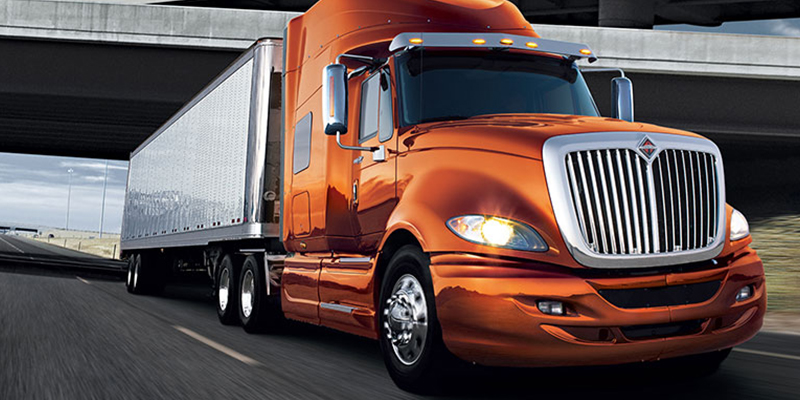The annual DOT Inspection is required of all CMVs that have a GVWR of 10,001 lbs or more, as defined in the definition of a CMV in CFR 390.5 for interstate carriers with US DOT operating authority. (For INTRAstate operators check with your state carrier enforcement for the adoption of this federal regulation)
CFR 396.17 requires that all CMVs that meet the above definition be inspected annually, according to Appendix A of the FMCSA regulations. Click on the following link to access Appendix A
A motor carrier shall not use a commercial motor vehicle unless each component identified in Appendix G has passed an inspection at least once during the preceding 12 months and documentation of such inspection is on the vehicle. The documentation may be the inspection report prepared in accordance with CFR 396.21 or other forms of documentation, based on the inspection report (e.g., sticker or
decal), which contains the following information:
-
Date of inspection
-
Name of Motor Carrier
-
Address of the motor carrier or other entity where the inspection report is maintained
-
Information uniquely identifying the vehicle inspected if not clearly marked on the
-
motor vehicle
-
Certification that the vehicle has passed an Inspection in accordance with CFR 396.17
Motor Carrier record keeping requirements for periodic inspections are found in CFR 396.21.
The qualified inspector performing the inspection shall prepare a report which:
-
Identifies the individual performing the inspection
-
Identifies the motor carrier operating the vehicle
-
Date of the inspection
-
Vehicle inspected
-
Vehicle components inspected
-
Describes the results of the inspection
-
Includes the identification of those components not meeting the minimum standards set forth in Appendix G
-
Certifies the accuracy and completeness of the inspection as complying with all the requirements of CFR 396.17
The original or copy of the inspection report shall be retained by the motor carrier or other entity that is
responsible for the inspection for a period of fourteen months from the date of the inspection report. The
original or a copy of the inspection report shall be retained where the vehicle is either housed or maintained.
The original or a copy of the inspection report shall be available for inspection upon demand of an authorized
Federal, State, or local officials.
Who is a qualified Inspector?
The FMCSA defines an inspector in CFR 396.17 as a person who understands the inspection criteria set forth in 49 CFR Part 393 and Appendix A of this subchapter and can identify defective components. That person is knowledgeable of and has mastered the methods, procedures, tools, and equipment used when performing an inspection. Also, capable of performing an inspection by reason of experience and training. Please click on the following link for an example of a certification for an annual inspector, which contains the certification requirements.
Exemptions to the Annual Inspection
Vehicles passing roadside or periodic inspections performed under the auspices of any State government, equivalent jurisdiction, FMCSA, meeting the minimum standards contained in Appendix A of this subchapter, will be considered to have met the requirements of an annual inspection for a period of 12 months. Commencing from the last day of the month in which the inspection was performed. The following states and provinces have mandatory inspection programs that meet this exemption:
United States: The Federal Motor Carrier Safety Regulations require that all commercial motor vehicles operating in interstate commerce must pass an inspection at least annually. One way to satisfy this requirement is through the periodic inspection programs administered by certain states. To qualify, the state inspection program must comply with federal standards.
The following is a complete list of states with inspection programs that the Federal Motor Carrier Safety Administration (FMCSA) has determined are comparable to, or as effective as, the federal periodic inspection requirements.
-
Alabama (LPG Board), California, Connecticut, District of Columbia, Hawaii, Illinois, Louisiana, Maine, Maryland, Massachusetts, Michigan, Minnesota, New Hampshire, New Jersey, New York, Ohio, Pennsylvania, Rhode Island, Texas, Utah, Vermont, Virginia, West Virginia, and Wisconsin
Note that two states that used to appear on this list have since been removed. Arkansas no longer has a periodic inspection program for buses, and Oklahoma has repealed its inspection requirements.
In addition to the states listed above, the FMCSA also accepts the inspection programs of the Yukon Territory and the 10 Canadian Provinces:
-
Alberta, British Columbia, Manitoba, New Brunswick, Newfoundland, Nova Scotia, Ontario, Prince Edward Island
-
Quebec, Saskatchewan
The FMCSA also considers Mexico’s NOM (Norma Official Mexicana or Official Mexican Standard) 68 program, as comparable to, or as effective as, the federal periodic inspection requirements.
All other states either have no periodic inspection programs for commercial vehicles or their programs have not been determined by the FMCSA to be comparable to the federal requirements.
The top 4 FMCSA violations of 2021
The FMCSA has released violation data for the fiscal year 2021 and the numbers indicate some alarming data: of every 100 carriers who get audited by the DOT, fewer than six passed without a violation. And the remaining 94.5 %? By the time their audit is complete, they average six violations. Depending on what violations, that can add up to a big fine for your business.
The key to being in that 5.5% is to always be audit-ready—something that can be easier said than done given all of the regulatory requirements you must comply with. As you evaluate your company’s audit preparedness, it might be helpful to understand what compliance areas resulted in the most violations for other carriers. Although this list is far from comprehensive, it’s a good place to start when determining how prepared you’ll be when an auditor calls or comes knocking.
No. 1: Allowing a driver to operate with a suspended/revoked CDL
This is the top violation for the fifth year in a row, accounting for 30.63% of total acute violations. For those who were fined for allowing a driver to operate with a suspended/revoked CDL, the average fine amount was $8,991.
All carriers know that they shouldn’t let a driver with a suspended/revoked CDL behind the wheel. However, unless they’re monitoring their drivers’ motor vehicle records on an ongoing basis, they may not know that a suspension or revocation has occurred until it’s too late. Carriers are only required to run an MVR on each driver annually. But if a driver’s license gets revoked right after that report is run, it could be almost a year before the carrier finds out (if they aren’t pulled over and caught first).
The best way to prevent this violation is to implement an MVR monitoring program in your business that constantly monitors your drivers’ motor vehicle records and lets you know instantly when new information is detected.
Nos. 2 and 3: Failing to implement an alcohol and/or drug testing program (or random testing program)
The second and third most common violations both have to do with having a DOT-compliant drug and alcohol testing program—which includes a pre-employment drug test, a random testing program, and post-accident, reasonable suspicion, and follow-up tests, as needed. These violations accounted for 35.67% of all violations in the fiscal year 2021, with an average fine amount of $8,361. As expected, some of these fines were very steep with multiple carriers settling for $20,000-$42,000 for noncompliant drug testing programs.
The best way to avoid these fines is to have a compliant DOT drug and alcohol testing program in place. Working with a third-party vendor who will manage a compliant program on your behalf will ensure that all of your drivers’ testing requirements are being met throughout their employment with your company. Consider an upgrade to an EASY DOT Drug Testing Program
No. 4: Allowing a driver with more than one CDL to drive a CMV
The fourth most common violation in 2021 is for allowing a driver with more than one CDL to drive a commercial motor vehicle. Although states are supposed to check to ensure that a driver doesn’t have another valid CDL prior to issuing a new license, this process doesn’t always happen—or doesn’t reveal the needed information.
That leaves it up to the carrier to verify that their drivers have just a single CDL. Although it’s not a required part of the pre-employment process, working with a DOT background check provider that can run the required check will give you the peace of mind that you’re operating compliantly and protect you from a hefty fine. For carriers who were fined for this violation last year, the average fine amount was $8,378.
Other common areas of non-compliance involved using an unqualified driver, employing a driver who was disqualified from holding a CDL, and not keeping inquiries into the driver’s employment record in the driver qualification file.










